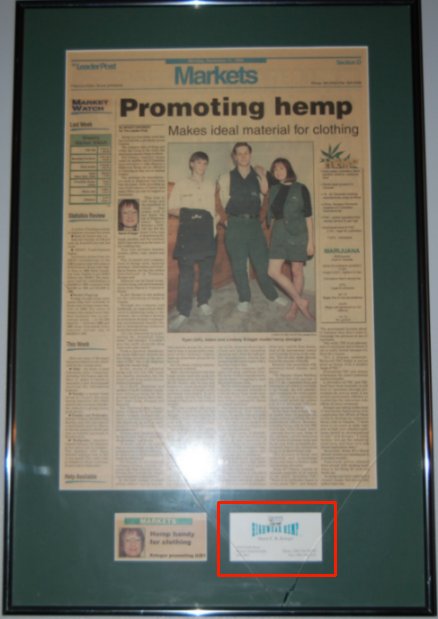Hemp paper versus newspaper. All three items in the picture were put in the frame behind glass in the 1990's at the same time. One newspaper article, two business cards. One business card is made of hemp. Two cracks in the glass cross right over the Highwear Hemp business card boxed in red.
The picture says the rest....
Good Kannabis Growing!
The picture says the rest....
Good Kannabis Growing!



